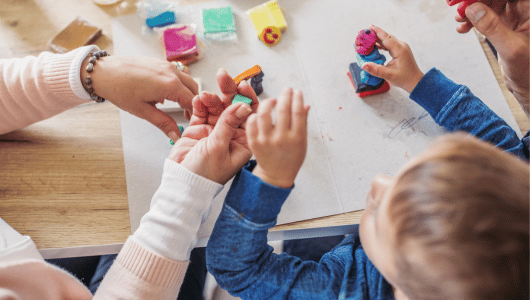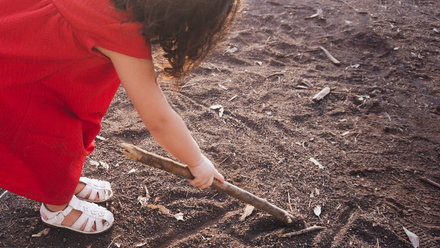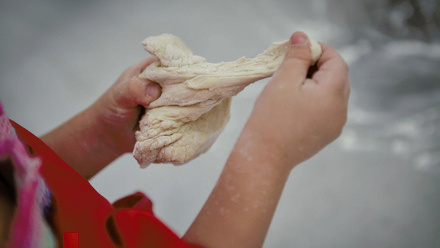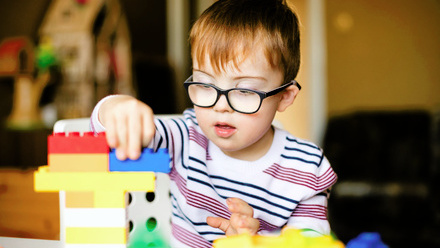How to create an ‘active learning’ environment
When you think about learning in the early years, what comes to mind? Splashing in the water, running around the garden, singing and clapping at circle time. Young children’s brains are growing at the fastest rate they ever will during their time with us in early education and care – as each neuron builds new connections and stimulates rapid developments, children are learning and growing every second of every day. To create an environment that encourages this stimulation and engagement, we need to ensure that the provocations of our learning opportunities promote curiosity and active enquiry.
In this learning workout, we are going to take a look at what it means to build an active learning environment and think about the ways this can be established within the provision.
What do we mean by active learning?
Children learn best through doing – observing others, making mistakes and navigating the world around them through their own actions. Active learning refers to learning through active engagement in the environment, where children are purposely involved in the entire process of the provision and the ways it changes throughout its course.
Active learning is identified as one of the Characteristics of Effective Learning (CoEL) and highlights the value of keeping children directly involved in their play. It establishes a sense of belonging through participation in routines, being able to predict aspects of their day and use initiative to become truly involved in the setting, as well as being able to bounce back from mistakes and keep on trying when things get tricky.
By allowing children to navigate these feelings, correct their own behaviours and pay particular attention to the details of their activity, they are able to show a genuine appreciation for their goals and take the value of achievements from a holistic perspective – pride over prizes.
When we feel proud of something we have achieved, we are motivated to continue and a passion grows for further enquiry, learning more and building the confidence to try new things. Active learning promotes this sense of exploration for children who are able to concentrate on a task, think critically about their decisions and reflect on mistakes to learn for next time. They keep on trying and are encouraged by their ability, and that of others.
As early education and care professionals, part of our role is to propagate this sense of discovery. Jean Piaget and his theory of cognitive development in childhood refers to young children as ‘lone scientists’ through their engagement with a rich, experimental environment which we’ve come to know as ‘active learning’.
How do we promote active learning?
Active learning is all about discovery – so let’s discover some of the ways to make our learning opportunities more active!
The ‘adult gaze’
When planning interesting provocations for children, it can be easy to get swayed by what we think, as professionals, looking engaging. But active learning is all about children discovering by themselves, learning to find new ways to explore and to learn through trial and error.
The adult gaze refers to adults’ views of children and the decisions that they make based on these views. A growing body of research argues for moving away from this to promote children’s perspectives. By supporting activities away from this gaze and allowing children to play away from adult control, active learning can take place through children’s autonomy of the environment and established sense of self in their play.
-
Think about the ways that the environment is set up. Are there clear goals already established or can children explore the provision with very little guidance?
-
Consider a provision’s physical space too. Whilst it is important that we are able to supervise children at all times, could the children feel ‘exposed’ in their play? Does it offer a quiet space to promote reflection and support focus?
Sustained shared thinking
Adults do play an important part in enriching an environment through their demonstration of enquiry and enthusiasm for play. Sustained Shared Thinking is a popular practice that encourages adults to engage with and work alongside children as they discover through play.
Siraj-Blatchford defines it as:
“an episode in which two or more individuals “work together” in an intellectual way to solve a problem, clarify a concept, evaluate activities, extend a narrative etc. Both parties must contribute to the thinking and it must develop and extend”.

In this interaction, the adult and child are working together to try new ways of working and build connections through an exchange of ideas. By building on current understandings to solve problems together, at the same level, children are actively engaged in a focused task but are supported by adults who can guide thoughtful questions and extend problem-solving skills to cultivate deeper thinking.
Let them get it wrong
It can be difficult to watch children get frustrated and upset when things don’t go to plan but getting things wrong and working through mistakes is a key aspect of active learning. Whilst we can provide support and acknowledge the validity of their feelings, it is important to give children the space to work through these problems independently. Contributing to their ability to self-regulate, learning from mistakes and being able to try again are core values to develop confidence and resilience to last a lifetime.
Final thoughts
Active learning is a core aspect of early education and care, facilitating independent enquiry and establishing skills for a life of problem-solving, resilience and dynamic learning. Allowing children to develop their own ways of working things out, discovering for themselves is a versatile skill that can benefit all areas of development.






